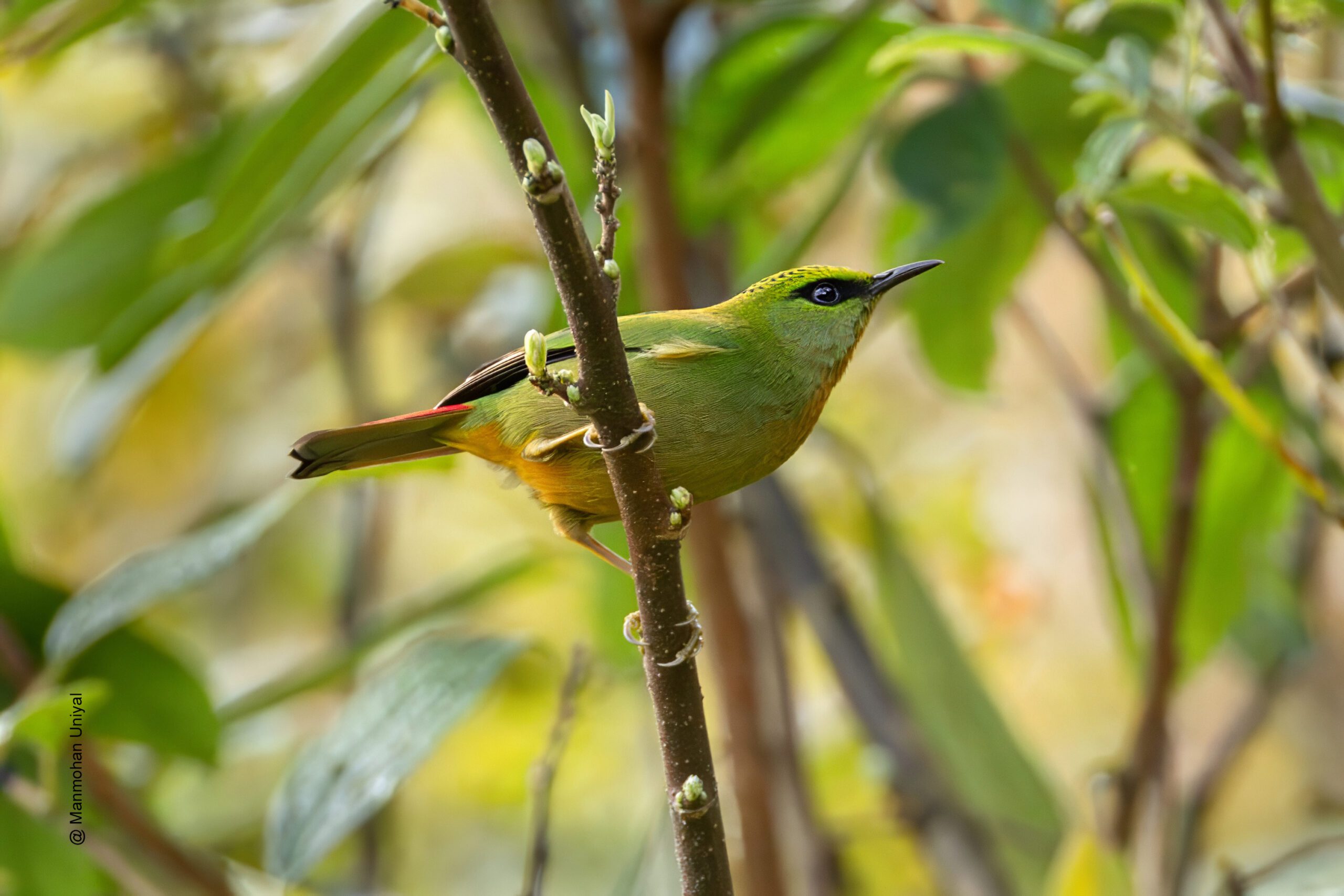
The Fire-tailed Myzornis (Myzornis pyrrhoura) is a striking bird species known for its vivid coloration and elusive nature. Found in the montane forests of the Eastern Himalayas, this bird is a prized sight for birdwatchers. It inhabits high-altitude regions ranging from 1,800 to 4,000 meters and is particularly associated with rhododendron and bamboo forests.
Distribution in India
In India, the Fire-tailed Myzornis is primarily found in the northeastern Himalayan states of Arunachal Pradesh, Sikkim, and parts of West Bengal, particularly around Darjeeling. The Myodia Pass in Arunachal Pradesh, where you spotted this bird, is a well-known location for its presence. This bird is often observed during spring and summer (March to May), coinciding with the blooming of rhododendrons, which are a vital food source.
Physical Characteristics
The Fire-tailed Myzornis is a small bird, approximately 13–15 cm in length, and weighs around 15 grams. Its vibrant plumage makes it unmistakable:
- Body: The upper parts are bright green, with a contrasting fiery red tail that gives the bird its name.
- Face: It has a striking crimson mask and black patches around the eyes, giving it a sharp and unique look.
- Wings: Subtle black markings on the wings, accented with a hint of blue.
- Bill: Short and slightly curved, adapted for feeding on nectar and insects.
Habitat and Behavior
The Fire-tailed Myzornis is often seen foraging in small flocks or pairs. It is an active and restless bird, darting through the undergrowth and foliage in search of insects, spiders, and nectar. Its affinity for rhododendron flowers makes it a key species for pollination in its ecosystem.
Seasonal Presence
The bird’s activity peaks during spring and early summer when flowers bloom, providing abundant nectar. In winter, it may move to slightly lower altitudes in search of food, though it generally prefers high-altitude forested regions.
Conservation Status
The Fire-tailed Myzornis is not currently considered endangered, but habitat loss and climate change pose long-term threats to its population. Its dependence on specific habitats highlights the need for conserving the montane forests of the Eastern Himalayas.
Spotting this bird in Myodia Pass is a remarkable experience, given its shy and agile nature. This encounter reflects the pristine biodiversity of Arunachal Pradesh, a haven for India’s avian treasures.
